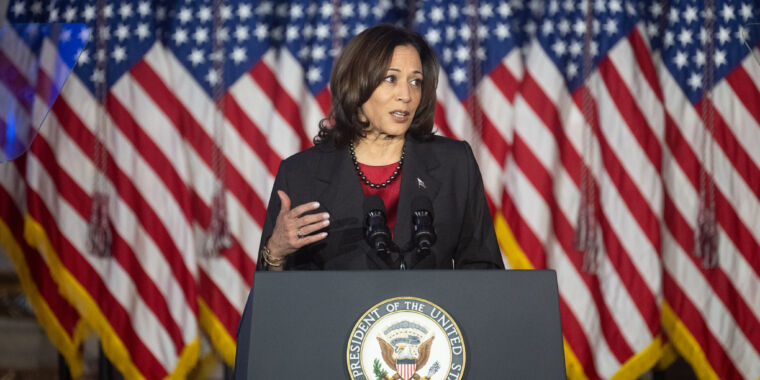
NASA/Joel Kofsky
One of the core principles of NASA’s Artemis program to return astronauts to the Moon is the inclusion of international partners. This links the program, such as the International Space Station, with considerations of geopolitics and international relations, along with major themes such as US national standing, exploration, and scientific discovery.
Earlier this year, NASA hired Canadian astronaut Jeremy Hansen to train the Artemis II crew to fly around the far side of the moon, a mission that will likely launch sometime in 2025. That flight won’t land on the moon, but NASA plans to conduct a series of lunar landing missions starting with the Artemis III mission later this decade.
An international astronaut will land on the moon during one of NASA’s Artemis missions, Vice President Kamala Harris announced Wednesday.
“Today, in recognition of the essential role our allies and partners play in the Artemis program, I am proud to announce that along with American astronauts, we intend to land an international astronaut on the surface of the Moon by the end of the decade,” Harris said at a meeting of the National Space Council.
Although the National Space Council is useful in bringing together disparate interests across the U.S. government to help shape more coherent space policies, public meetings like the one Wednesday can seem routine. Harris left the stage shortly after her speech, and other government officials read from prepared remarks during the rest of the event.
However, Harris’ announcement highlighted the role the space program plays in raising US soft power. It was widely assumed that an international astronaut would eventually land on the moon with NASA. Harris set a deadline to achieve this goal.
between friends
NASA has long included astronauts from its international partners in human spaceflight missions, dating back to the ninth flight of the Space Shuttle in 1983, when West German astronaut Ulf Meerbold joined five Americans on a trip to low Earth orbit. US government officials saw this as a way to foster close relations with like-minded countries. The inclusion of foreign astronauts in U.S. missions also benefits partner nations that make financial commitments to U.S.-led space projects through a high-level flight opportunity for one of their citizens.
In a similar way, the Soviet Union provided its Cold War allies with seats on Soyuz flights to low Earth orbit. For several years, China has extended invitations to international astronauts to travel to the Tiangong Space Station. So far, only Chinese astronauts have visited Tiangong.
NASA managers distribute crew assignments to the ISS based on each partner’s financial contribution to the costs of operating the US-led portion of the complex. NASA is responsible for more than three-quarters of this portion of the ISS budget, followed by Japan, the European Space Agency (ESA), and Canada. Russia is responsible for paying the operating costs of its section of the International Space Station.
Among the international partners contributing to the Artemis project, a European astronaut seems likely to get the first opportunity to land with NASA.
The European Space Agency has funded the development of service modules used on NASA’s Orion spacecraft, which will transport astronauts from Earth to the Moon and back. These modules provide power and propulsion to Orion. ESA is also developing the refueling and communications infrastructure for the small Gateway space station that will be built in lunar orbit.
A Japanese astronaut may also have a chance to get a seat on the Artemis landing. The Japanese government has committed to providing a life support system for the Gateway’s international accommodation unit, along with resupply services to deliver goods to the Gateway. Japan is also interested in building a pressurized rover for astronauts to drive across the lunar surface. In recognition of Japan’s contributions, NASA last year committed to sending a Japanese astronaut aboard Gateway.
Canada is building a robotic arm for Gateway, but a Canadian astronaut already has a seat on NASA’s first crewed Artemis mission, albeit without a trip to the moon’s surface.

“Web maven. Infuriatingly humble beer geek. Bacon fanatic. Typical creator. Music expert.”





More Stories
NASA Close to Deciding What to Do With Boeing’s Troubled Starliner Spacecraft
Scientists May Have Discovered ‘Dark Oxygen’ Created Without Photosynthesis: NPR
Real Scientists Lived on Fake Mars in a Texas Shed for a Year